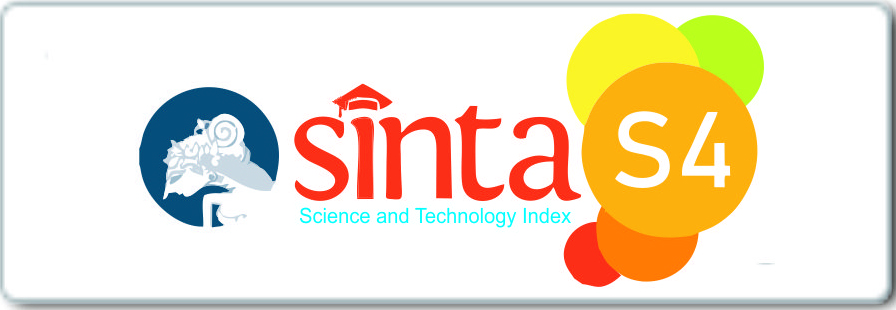Knowledge and experience in using 2D and 3D diagnostic imaging among dentists in Surabaya
Downloads
Background: Radiography is essential in dentistry for diagnosis and treatment planning, with two-dimensional imaging such as panoramic and periapical radiographs being commonly used. The advancement to three-dimensional imaging, specifically Cone Beam Computed Tomography (CBCT), provides more detailed visualization but remains underutilized due to limited availability and knowledge among dentists in Indonesia. Purpose: This research is aimed to determine the knowledge and experience of using 2D and 3D diagnostic imaging among dentists in Surabaya. Methods: This research is using an observational descriptive study with a cross-sectional design consisting of 100 dentists who are domiciled in Surabaya and registered with PDGI in Surabaya. Results: The result showed that dentists’ knowledge of 2D diagnostic imaging with a good category has a percentage of 18%, quite good category with 49% and poor category with 33%. Meanwhile, the dentists’ knowledge of 3D diagnostic imaging with a good category has a percentage of 9%, quite good category with 36% and poor category with 55%. Around 88% of respondents have referred their patients for panoramic and periapical radiographs, while only about 22% of dentists have referred their patients for CBCT examinations. Conclusion: The knowledge of dentists regarding 2D diagnostic imaging is quite good, while the knowledge of dentists regarding 3D diagnostic imaging is low. The majority of dentists in Surabaya often refer their patients for panoramic and periapical radiographic examinations compared to referring them for CBCT examinations.
Himammi AN, Hartomo BT. Kegunaan radiografi panoramik pada masa mixed dentition. J Radiol Dentomaksilofasial Indones. 2021 Apr 30;5(1):39.
Fathiyya F, Pramanik F, Firman RN. Kualitas radiograf periapikal dengan teknik paralel di Rumah Sakit Gigi dan Mulut Universitas Padjadjaran Quality of periapical radiographs with parallel techniques in Universitas Padjadjaran Dental Hospital. Padjadjaran J Dent Res Students. 2019 Feb 26;3(1):70.
Anggara A, Iswani R, Darmawangsa D. Perubahan Sudut Penyinaran Vertikal Pada Bisecting Tecnique Radiography Terhadap Keakuratan Dimensi Panjang Gigi Premolar Satu Atas. B-Dent J Kedokt Gigi Univ Baiturrahmah. 2019 Mar 13;5(1):1–8.
Ramadhan AZ, Sitam S, Azhari A, Epsilawati L. Gambaran kualitas dan mutu radiograf. J Radiol Dentomaksilofasial Indones. 2020 Jan 15;3(3):43.
Shah N. Recent advances in imaging technologies in dentistry. World J Radiol. 2014;6(10):794.
Mudjosemedi M, Widyaningrum R, Gracea RS. Perbedaan Hasil Pengukuran Horizontal pada Tulang Mandibula dengan Radiograf Panoramik. Maj Kedokt Gigi Indones. 2015 Jun 1;1(1):78.
Izzetti R, Nisi M, Aringhieri G, Crocetti L, Graziani F, Nardi C. Basic Knowledge and New Advances in Panoramic Radiography Imaging Techniques: A Narrative Review on What Dentists and Radiologists Should Know. Appl Sci. 2021 Aug 26;11(17):7858.
Putri NPSS, Yunus B. Penggunaan Teknik Radiografi Konvensional Dan Digital Pada Perawatan Endodontik (Tinjauan Pustaka). Cakradonya Dent J. 2023 Aug 5;13(2):97–105.
Sukmana BI. Radiografi di bidang kedokteran gigi. Yogyakarta: Phoenix Publisher; 2019. 47 p.
Kurniati N. Evaluasi Diagnostik Lesi Endo-Perio Yang Menetap Setelah Perawatan Endodontik Menggunakan Radiografi Periapikal dan CBCT. J Ilm dan Teknol Kedokt Gigi. 2019 May 31;15(1):6.
Yeung AWK, Tanaka R, Jacobs R, Bornstein MM. Awareness and practice of 2D and 3D diagnostic imaging among dentists in Hong Kong. Br Dent J. 2020 May;228(9):701–9.
Pamadya S, Dhartono J. Pengetahuan Dokter Gigi Di Indonesia Tentang Cone Beam Computed Tomography. J Ilm dan Teknol Kedokt Gigi. 2022 Jan 25;17(2):84–93.
Kanter M, Anindita P, Winata L. Gambaran Penggunaan Radiografi Gigi di Balai Pengobatan Rumah Sakit Gigi dan Mulut Universitas Sam Ratulangi Manado. e-Gigi, J Ilm Kedokt Gigi. 2014;2(1):1–7.
White SC, Pharoah MJ. Oral Radiology - E-Book: Principles and Interpretation. Elsevier; 2014. 64–65 p.
Budiman, Riyanto A. Kapita Selekta Kuesioner Pengetahuan dan Sikap dalam Penelitian Kesehatan. Jakarta: salemba Medika; 2013. 66–69 p.
Tang Z, Liu X, Chen K. Comparison of digital panoramic radiography versus cone beam computerized tomography for measuring alveolar bone. Head Face Med. 2017 Feb 22;13(1):2.
Copyright (c) 2024 Nastiti Faradilla Ramadhani, Aga Satria Nurrachman, Yunita Savitri, Alhidayati Asymal, Sri Wigati Mardi Mulyani, Ira Widjiastuti, Muhammad Luthfi, Theodora Valensia, Hafshah Zhafirah Siri Hanun

This work is licensed under a Creative Commons Attribution 4.0 International License.
This is an open access journal, and articles are distributed under the terms of the Creative Commons Lisence, which allows others to remix, tweak, and build upon the work non-commercially, as long as appropriate credit is given and the new creations are licensed under the identical terms.
Copyright notice:
IJDM by UNAIR is licensed under a Creative Commons Atribusi 4.0 Internasional.
- The journal allows the author to hold the copyright of the article without restrictions.
- The journal allows the author(s) to retain publishing rights without restrictions.
- The legal formal aspect of journal publication accessibility refers to Creative Commons Attribution (CC BY)
















